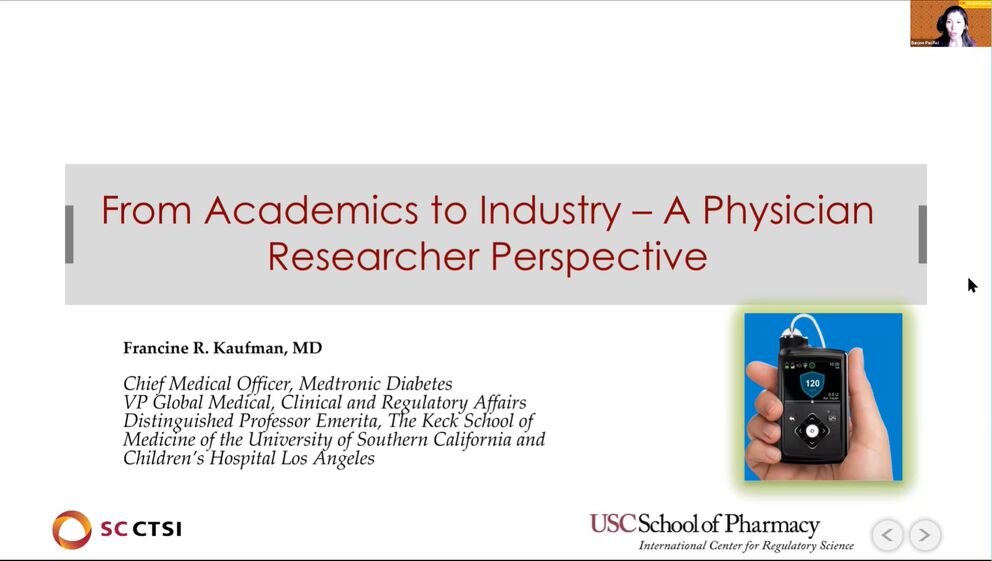- Artificial Pancreas Device System (Closed System)
- Can connected devices and an algorithm better regulate insulin delivery matched to glucose levels than patients/clinicians?
- What would need to be done for patient/clinician acceptance?
- What would be the regulatory pathway to a commercial device?
- The need for the artificial pancreas
- HbA1c goal is to have it before 7.5 for children, and below 7 for adults
- Data shown in data exchange indicated that children and adults do poorly in managing diabetes on their own
- Technology helps; mean value HbA1c is lower in insulin pump users versus those who do not use technology
- Pathway forward
- Components of exploration, verification, and validation needed to develop an artificial pancreas:
- Laboratory study, preclinical study, in-silico study, early feasibility clinical study, late feasibility clinical study, pivotal clinical study, post-approval study
- Evidence Building: Suspend Threshold and Predicted Suspend
- Sensor glucose value aimed to use a predictive suspend rather than a suspended threshold (programmed insulin delivery regardless of glucose levels)
- Required involvement of engineers, regulatory, quality, manufacturing, marketing, clinical trial leaders and staff, statisticians, project managers, physician researchers, clinical trial sites
- Aspire Trial: induced hypoglycemia (dangerous medical event that can induce unconsciousness, seizures, etc.) twice in a group of 100 patients
- Time spent in hypoglycemia was litigated by automated system/algorithm
- Hybrid Closed Loop; requires patient input (e.g. consumed carbohydrates)
- Composed of glucose sensor, transmitter, infusion site, blood glucose meter, and insulin pump with closed-loop algorithm software
- Early studies: overnight closed loop in the clinic, day and night closed loop CAMP feasibilities
- Overnight period is without disturbances of food and activity with over 80% of the time in a target range of 70-180mg/dL
- Challenge Testing (Intense studies done in clinics with able staff): exercise, unannounced meals, sensor false calibration, lost transmission, maximal insulin delivery
- Success led to studies in diabetes camps, one of the most comprehensive studies done (with IRB)
- Minimed 670G System with Smartguard Technology
- Single-arm, non-randomized studies (with inclusion criteria)
- Study patient flow: baseline environment, run-in phase, hotel study, in-home study, HbA1C and hypoglycemia rates
- Observed change in A1C distribution and reduced glycemic variability from run-in to study end
- FDA approved the first artificial pancreas, leading to the commercialization of the devices
- 14,350 patients on Minimed 670G System
- Nearly half a million people using the device today
- Commercial Launch: mirrored what was seen in the pivotal trial
- Next Step in Hybrid Closed Loop: Automated therapy is the future of diabetes management
- One algorithm fits everyone in the population; personalization is the future of medicine, push to enhance the therapy to become more individualized and self-correct itself for meal prediction, exercise recognition, etc.
- Requires dissection of data from thousands of individuals currently using the device
- Future Issues with Closed Loop
- Still requires a group effort (big data people, researchers inside industry and at clinical research sites in academic centers, Regulatory/Quality, engineers for further product development, software/hardware, materials experts, cloud computing, marketing, sales, etc.)
- Data is generated by users every 5 minutes; immense amounts of data that require in-depth analysis
- Pathway to study specific user groups such as elite athletes, ill patients, etc.
- Five Main Stages of the Evolution of Closed Loop Systems: 1) Threshold Suspend, 2) Predictive Suspend, 3) Hybrid Closed Loop, 4) Advanced Hybrid Closed Loop, 5) Towards Personalized Closed Loop
- Each step reduced burden on the user
- Relevance: 153,000 diabetes patients in Kazakhstan; Medtronic partnered with the nation’s government to move all children with Type 1 Diabetes onto insulin pumps
- Goal: 50% of children on insulin pumps within two years
- Other organizations that are helping in the fight to treat diabetes:
- Insulin for Life brings supplies to children and during disasters
- Life for a Child is an international program that is helping over 12,000 children and youth with diabetes in 43 countries
- In Ethiopia, teaching standards of care to healthcare providers and endocrinologists
- Final Thoughts
- These medical developments are a huge, concerted group effort - it requires us to address the unmet needs and ultimately reach the pivotal trials that cannot succeed without a huge and diverse group of professionals.
Regulatory Science Virtual Symposium: “Clinical Research Career Pathways” Session 2: From Academics to Industry – A Physician Researcher Perspective (2021)
Regulatory Science
Study Design
Clinical Trials
Medical Devices
Quality Science
Global Research
Course Syllabus/Topics
Acknowledgement
Accompanying text created by Omer Baker, BS Human Biology Candidate | omerbake@usc.edu | Edited by Annie Ly, MS Regulatory Science Candidate | lyannie@usc.edu

